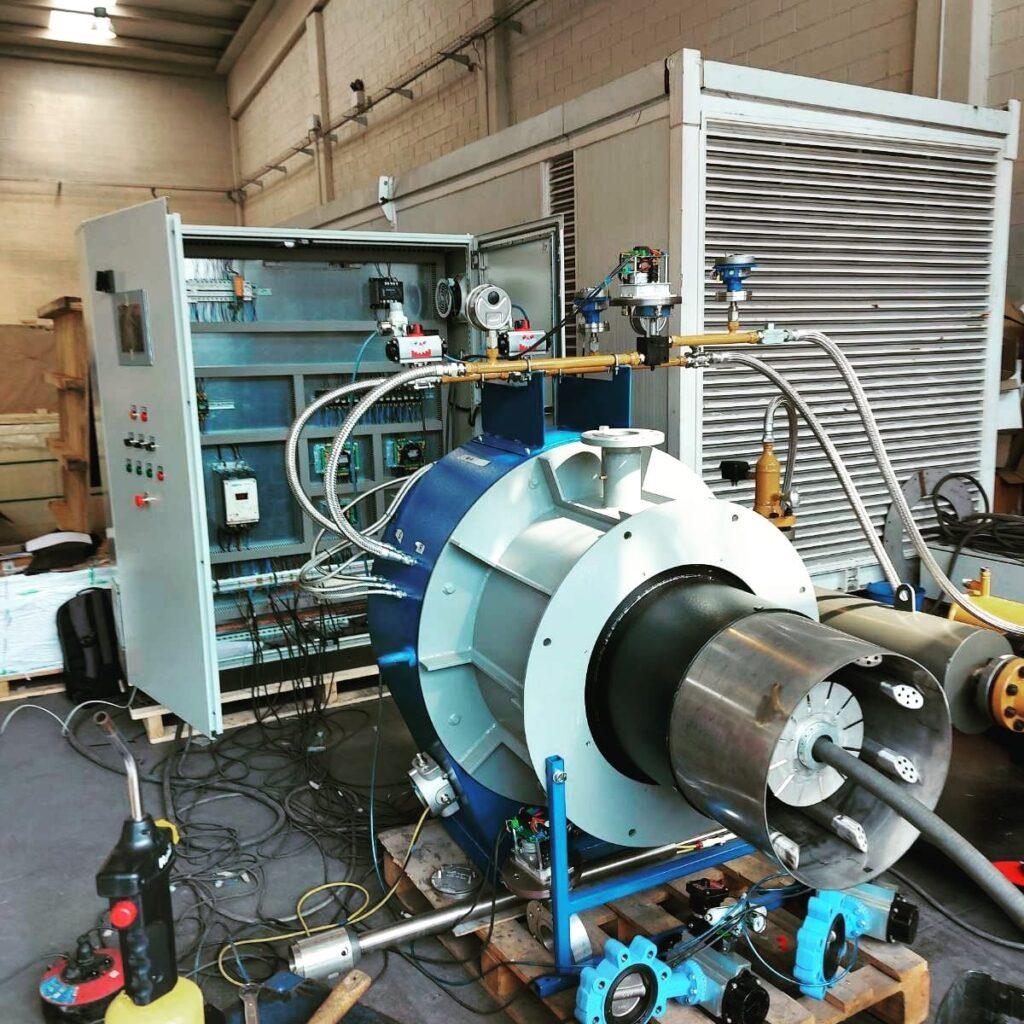
News | Industrial Combustion Equipment
All the latest News on our company
FAT, Factory Acceptance Tests of a burner for the oil and gas sector
Posted on: 16 / 10 / 2023 | 0 Comentarios | Tags: EX Burner, Factory Acceptance Test, Oil and Gas, Petróleo y gas, Pruebas FAT de Aceptación en Fábrica, Quemador EX
E&M Combustión has successfully carried out the FAT (Factory Acceptance Test) tests of a 11.5 MW JBD burner to operate in potentially explosive atmospheres in the oil and gas sector. The equipment now enters the preparation phase for delivery to the end user, where it will undergo SAT (Site Acceptance Test) testing, at the final location of the burner.

The equipment that has thus been shown to meet the most demanding requirements for the safety of oil and gas facilities is a JBD 32,000 G EX burner, which operates with combined natural gas-fuel oil fuel. It is designed and manufactured by the company according to the special regulations for industrial burners for installation in areas with explosion resistance classification, according to ATEX and NEC directives and standards, and has thus been shown to comply with the most demanding requirements for the safety of oil and gas facilities.
E&M Combustión continues to provide technical solutions to the oil and gas sector, manufacturing and supplying burners and heaters that meet the most demanding requirements for the safety of facilities.
FAT Factory Acceptance Tests of a burner
Commonly called FAT Tests, the tests carried out in these Factory Acceptance Tests represent a guarantee of quality of the manufactured product, and are often part of the process of acceptance of the equipment by the client, especially if it is critical equipment. They are carried out in the presence of the person in charge designated by the contracting company where they are going to be installed. The tests involve a set of systematic, ordered and recorded tests carried out by the manufacturer on the equipment, once the manufacturing phase is completed and before its shipment to the facilities where it will operate.
The tests allow us to verify and guarantee the different requirements of the equipment, from regulations and dimensional, to its operation, performance, safety, maintenance and documentation. In addition, they allow design flaws or incidents to be detected, which are then corrected with the least possible impact. Once completed and validated, the sealed copy is issued with all the documentation resulting from the tests so that the client can approve the equipment and proceed with its installation.


